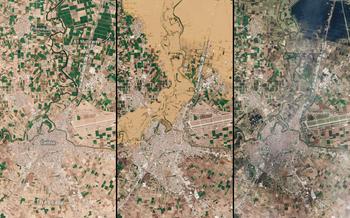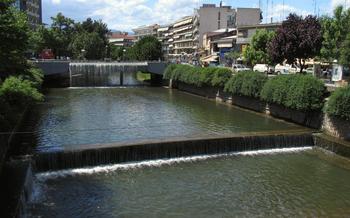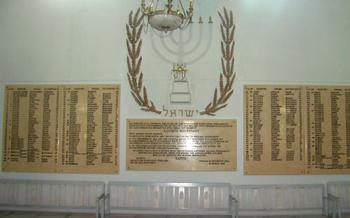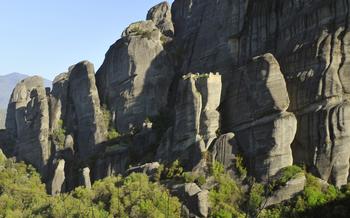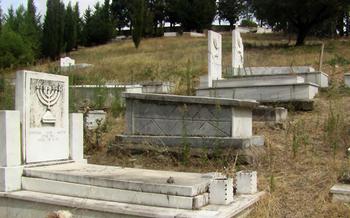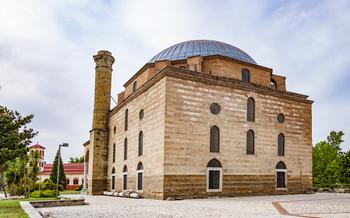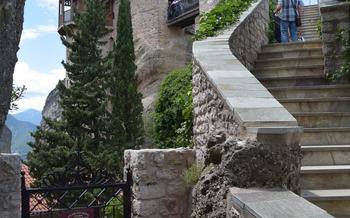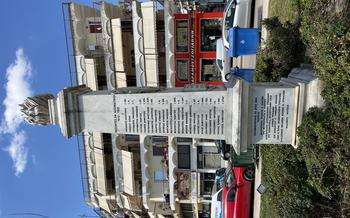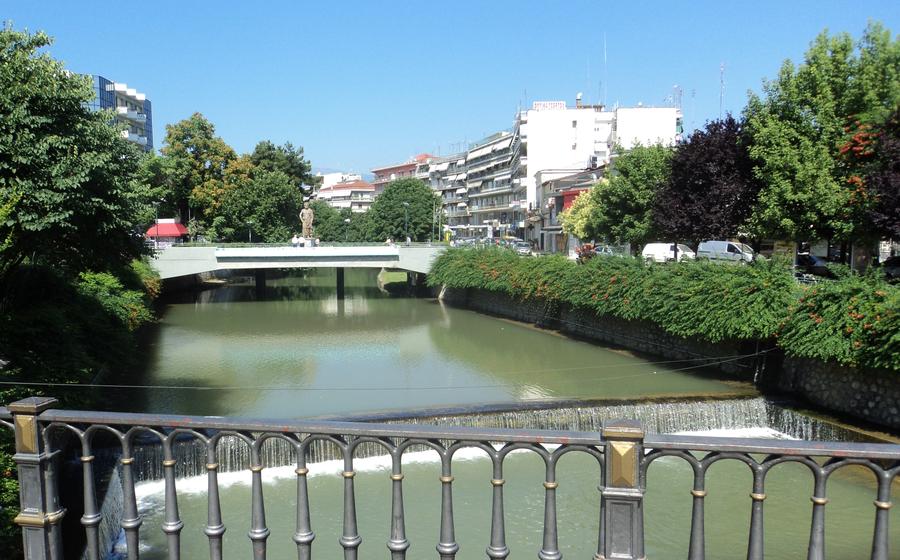
Meteora Sunset Point
- Meteora Sunset Point: A Majestic Panorama
- Planning Your Visit: Essential Tips
- Capture the Perfect Sunset Photo
- Exploring the Monasteries of Meteora
- Hiking and Trekking Trails
- Rock Climbing in Meteora
- Unique Accommodation Options
- Cultural Events and Festivals
- Exploring the Nearby Villages
- Budget Tips for Travelers
- Sustainable Tourism Practices
- Safety and Precautions
- Insider Tip: Hidden Gems
Meteora Sunset Point: A Majestic Panorama
Meteora, a cluster of towering rock formations in central Greece, is renowned for its breathtaking sunsets. As the sun begins its descent, the sky transforms into a canvas of vibrant hues, casting a warm glow upon the ancient monasteries perched atop these natural wonders. The interplay of light and shadow creates a mesmerizing spectacle that draws visitors from around the world.
Meteora's unique geological formations, shaped by centuries of erosion, provide a dramatic backdrop for sunset viewing. The monasteries, built between the 14th and 16th centuries, cling precariously to the rock faces, adding to the awe-inspiring scenery. As the sun dips below the horizon, the monasteries appear to float in mid-air, creating an ethereal and unforgettable sight.
The emotional impact of witnessing a Meteora sunset is profound. The combination of the stunning natural beauty, the historical significance of the monasteries, and the tranquility of the surroundings creates a sense of wonder and serenity. As the sky transforms into a myriad of colors, visitors are filled with a sense of awe and gratitude for the beauty that nature and history have to offer.
Planning Your Visit: Essential Tips
Best Time to Visit:
The best time to visit Meteora for optimal weather conditions is during the shoulder seasons, spring (April-May) and autumn (September-October). During these months, the weather is generally mild and pleasant, with clear skies and comfortable temperatures, making it ideal for outdoor activities and sightseeing. Summer months (June-August) can be hot and crowded, while winter (November-March) can be cold and wet, with limited access to some areas due to snow and ice.
Choosing the Right Tour or Transportation:
Consider booking a guided tour to delve deeper into the history and significance of Meteora. Tours typically include transportation from major cities like Athens or Thessaloniki, as well as visits to several monasteries and scenic viewpoints. If you prefer independent travel, renting a car offers flexibility and allows you to explore at your own pace. Public transportation is also available, but it may be less frequent and less convenient.
Packing Essentials:
Pack comfortable walking shoes or hiking boots for exploring the monasteries and trails. Bring layers of clothing as temperatures can change throughout the day, especially during the shoulder seasons. A hat, sunglasses, and sunscreen are essential for protection from the sun. Also, pack a camera to capture the stunning scenery and a flashlight if you plan to visit any monasteries that require it.
Common Challenges and Preparation:
Be prepared for uneven terrain and slippery surfaces, especially when visiting the monasteries. Wear appropriate footwear and take your time to avoid accidents. Note that some monasteries have strict dress codes, requiring visitors to cover their shoulders and knees. It's advisable to carry a scarf or shawl to comply with these guidelines. Finally, be aware of the potential for altitude sickness, especially if you're not used to high altitudes. Drink plenty of water and ascend gradually to avoid any discomfort.
Capture the Perfect Sunset Photo
Meteora's sunsets are a photographer's dream, and with the right techniques and knowledge, you can capture stunning images that will take your breath away.
-
Camera Settings: Use a tripod to stabilize your camera and avoid blurry shots. Set your camera to manual mode to have full control over the exposure. Choose a low ISO (e.g., 100-200) to minimize noise, a wide aperture (e.g., f/8-f/11) to capture sharp details, and a slow shutter speed (e.g., 1/15-1/30 sec) to blur the moving clouds and water.
-
Vantage Points: Explore different viewpoints to find the perfect composition. The most popular spots include the Meteora Sunset Point, the Monastery of Great Meteoron, and the Varlaam Monastery. Each offers unique perspectives and stunning backdrops.
-
Composition and Framing: Experiment with different compositions to create dynamic images. Incorporate leading lines, such as roads or riverbanks, to draw the viewer's eye into the scene. Frame your shot to include the dramatic rock formations, colorful clouds, and the setting sun.
-
Post-Processing: Once you have captured your sunset shots, enhance them with post-processing software. Adjust the white balance to achieve warm, golden tones. Fine-tune the exposure, contrast, and saturation to bring out the vibrant colors and details. Use filters or presets to add a personal touch to your images.
Exploring the Monasteries of Meteora
Historical and Architectural Significance
Perched atop towering rock pillars, the monasteries of Meteora stand as testaments to human ingenuity and spiritual devotion. Their construction began in the 14th century, when hermits seeking solitude and communion with God retreated to these seemingly inaccessible heights. Over the centuries, 24 monasteries were built, each a marvel of engineering and architectural prowess. Their intricate frescoes, adorned with vibrant colors and biblical scenes, offer a glimpse into the rich artistic heritage of the region.
Must-Visit Monasteries for an Immersive Experience
Among the most notable monasteries, the Great Meteoron Monastery commands attention. It is the largest and oldest monastery in Meteora, boasting an impressive collection of religious artifacts and stunning views from its balconies. The Monastery of Varlaam, with its intricate carvings and well-preserved frescoes, is another must-visit site. For those seeking a more secluded experience, the Monastery of Ypapanti, nestled in a serene valley, offers a tranquil retreat.
Dress Code and Other Important Guidelines for Visitors
When visiting the monasteries, it is essential to respect the religious significance of these sacred sites. Modest attire is expected, with shoulders and knees covered. Photography is permitted in most areas, but it is important to be mindful of the privacy of the monks and other visitors. Visitors are also requested to maintain silence and refrain from engaging in loud conversations or disruptive behavior.
The Spiritual Energy and Tranquility of the Monasteries
Beyond their historical and architectural significance, the monasteries of Meteora exude a palpable sense of spirituality and tranquility. The serene atmosphere, coupled with the breathtaking views of the surrounding landscape, creates an environment conducive to contemplation and inner peace. Whether you are a believer or not, the monasteries offer a unique opportunity to connect with the divine and experience the profound peace that permeates these hallowed grounds.
Hiking and Trekking Trails
Lace up your hiking boots and embark on an unforgettable journey through Meteora's mesmerizing landscapes. The region offers a diverse range of hiking trails, catering to hikers of all fitness levels. Whether you prefer leisurely strolls or challenging treks, Meteora has something to offer everyone.
Highlights of the Trails:
-
Grand Meteora Trail: Embark on this iconic trail to witness the most stunning views of the Meteora monasteries perched atop towering rock pillars. Marvel at the architectural wonders as you traverse this well-marked and easily accessible trail.
-
Varlaam Monastery Trail: This moderate trail leads you to the Varlaam Monastery, one of the largest and most impressive monasteries in Meteora. Along the way, soak in breathtaking panoramas of the surrounding landscape.
-
Ypapanti Monastery Trail: Discover the hidden gem of Ypapanti Monastery, nestled amidst serene surroundings. This easy trail offers a tranquil escape, ideal for nature lovers and those seeking solitude.
-
Holy Trinity Monastery Trail: Challenge yourself with this strenuous hike to the Holy Trinity Monastery, perched atop a towering pinnacle. The panoramic views from the monastery's balcony are simply breathtaking, making the arduous climb worthwhile.
Safety Precautions and Essential Gear:
-
Sturdy hiking shoes or boots are a must for navigating Meteora's rocky terrain.
-
Carry sufficient water, especially during the hot summer months, as there are limited water sources along the trails.
-
Dress in layers to adapt to changing weather conditions, as temperatures can fluctuate in the mountains.
-
Be aware of your surroundings and stay on marked trails to avoid getting lost.
-
Hike with a friend or guide, especially if you're attempting more challenging trails.
Tips for Sunset Viewing:
-
For the most magical sunset experience, plan your hike to coincide with the golden hour.
-
Choose a trail that offers unobstructed views of the sunset, such as the Grand Meteora Trail or the Varlaam Monastery Trail.
-
Find a comfortable spot to settle down and savor the spectacle of the sun casting its warm glow on the majestic rock formations.
Rock Climbing in Meteora
Meteora's towering rock formations have long captivated rock climbers from around the world. The region's unique geology and stunning scenery provide climbers with an unparalleled experience. With over 700 established climbing routes, Meteora offers challenges for climbers of all levels, from beginners to seasoned pros. The rock formations, composed of sandstone and conglomerate, offer a variety of textures and features, making each climb unique and exciting.
The history of rock climbing in Meteora dates back to the early 20th century when climbers began to explore the region's potential. Today, Meteora is recognized as one of the world's top rock climbing destinations, attracting climbers from all corners of the globe. The area's popularity can be attributed to its diverse range of routes, stunning scenery, and the thrill of climbing amidst the ancient monasteries.
For those seeking an adrenaline-pumping adventure, Meteora offers a variety of challenging routes that will test even the most experienced climbers. The region is home to some of the world's most difficult climbs, including the iconic "James Bond" route, which was featured in the 1981 film "For Your Eyes Only."
Safety is paramount when rock climbing in Meteora. Climbers should always use proper equipment and techniques to minimize the risk of accidents. It's important to be aware of the potential hazards, such as loose rock and unpredictable weather conditions, and to take appropriate precautions.
Climbing in Meteora is not just about the physical challenge; it's also about the breathtaking views and the spiritual connection to the monasteries. As climbers ascend the rock faces, they are rewarded with panoramic vistas of the surrounding countryside and the monasteries perched on their rocky outcrops. The experience of climbing in Meteora is truly unique and unforgettable, leaving climbers with a sense of accomplishment and awe.
Unique Accommodation Options
Meteora offers a diverse range of accommodation options to suit every traveler's taste and budget. From luxurious hotels with breathtaking views of the rock formations to cozy guesthouses exuding traditional charm, there's something for every traveler.
When choosing your accommodation in Meteora, consider the following factors:
-
Location: Opt for a hotel or guesthouse that offers easy access to the monasteries and hiking trails. Consider whether you prefer to stay in the heart of Kalabaka, with its vibrant nightlife and dining options, or in a quieter village like Kastraki, which offers a more intimate and serene experience.
-
Views: Many hotels and guesthouses in Meteora boast stunning views of the rock formations. If this is a priority for you, choose a room with a balcony or terrace that offers panoramic vistas.
-
Amenities: Consider the amenities that are important to you, such as a swimming pool, spa, or fitness center. Some hotels also offer guided tours and other activities to help you make the most of your stay.
-
Price: Accommodation prices in Meteora vary depending on the time of year, the location, and the amenities offered. Budget travelers can find affordable guesthouses and hostels, while those looking for a more luxurious experience can opt for one of the many high-end hotels.
Here are some of the most popular and highly-rated accommodation options in Meteora:
-
Divani Meteora Hotel: This luxurious hotel offers stunning views of the rock formations from its rooftop pool and restaurant.
-
Kastraki Village Hotel: This charming hotel is located in the village of Kastraki and offers a more intimate and traditional experience.
-
Meteora Inn: This cozy guesthouse offers affordable rates and a friendly atmosphere.
-
Theoxenia Hotel: This historic hotel is located in the heart of Kalabaka and offers a range of amenities, including a swimming pool and a spa.
No matter where you choose to stay, you're sure to find a unique and memorable accommodation experience in Meteora.
Cultural Events and Festivals
Meteora comes alive with vibrant cultural events and festivals throughout the year, offering visitors a unique opportunity to immerse themselves in the region's rich heritage and traditions. One of the most notable events is the Meteora Monastery Festival, held annually in August. This two-day celebration features traditional music and dance performances, local cuisine, and guided tours of the monasteries, providing an unforgettable glimpse into the spiritual and cultural significance of these iconic landmarks.
Another highlight is the Trikala Folklore Festival, which takes place in September. This lively festival showcases traditional Greek music, dance, and costumes, with performances by local groups and workshops where visitors can learn traditional dances and crafts.
For those interested in gastronomy, the Meteora Food Festival in October is a must-attend. This culinary extravaganza features local delicacies, cooking demonstrations, and wine tastings, allowing visitors to savor the flavors of the region and learn about its culinary traditions.
Cultural events and festivals in Meteora are not just about entertainment; they are also a way to connect with the local community and learn about their way of life. Visitors are warmly welcomed and encouraged to participate in the festivities, creating a truly immersive and memorable experience.
Exploring the Nearby Villages
Venturing beyond the monasteries, Meteora's picturesque villages offer a captivating glimpse into the region's rich history and vibrant culture. Kastraki, the closest village to Meteora, enchants visitors with its cobbled streets, traditional architecture, and breathtaking views of the rock formations. Explore its charming shops and tavernas, where you can savor local delicacies while soaking in the stunning scenery.
Kalambaka, the largest town in the region, boasts a vibrant atmosphere and a plethora of attractions. Visit the Holy Trinity Monastery, perched majestically on a hilltop, and delve into the town's rich history at the Meteora Museum of Natural History. For a unique cultural experience, attend one of the many festivals held throughout the year, where you can witness traditional dances, music, and local crafts.
Nestled amidst olive groves and vineyards, the village of Pyli exudes a tranquil charm. Wander through its narrow streets, adorned with colorful bougainvilleas, and discover hidden churches and charming cafes. Don't miss the opportunity to sample the village's renowned wine, produced from grapes grown in the fertile local vineyards.
Each village in the Meteora region possesses its own distinct character and allure. Whether you seek tranquility, cultural immersion, or breathtaking scenery, you'll find it all within these charming havens. Embrace the warmth and hospitality of the local communities as you explore the hidden gems that lie beyond the monasteries of Meteora.
Budget Tips for Travelers
Meteora offers a range of budget-friendly options for travelers who want to experience its wonders without breaking the bank. Here are some tips for budget-conscious travelers:
-
Choose budget-friendly accommodation: Opt for hostels, guesthouses, or family-run hotels instead of luxury resorts. Many guesthouses in Meteora offer comfortable rooms at affordable prices, often with stunning views of the rock formations.
-
Dine at local tavernas: Instead of splurging on expensive meals at touristy restaurants, try local tavernas that offer traditional Greek cuisine at reasonable prices. Look for tavernas frequented by locals, as they usually offer the best value for money.
-
Take advantage of free activities: Many activities in Meteora are free of charge, such as hiking, visiting the monasteries during non-peak hours, and exploring the nearby villages. Take advantage of these free activities to save money while still having a fulfilling experience.
-
Shop at local markets: For souvenirs and local products, visit the local markets instead of tourist shops. You'll find a wider variety of products at lower prices, and you'll also support the local economy.
Sustainable Tourism Practices
Meteora's unique landscape and cultural heritage demand responsible tourism practices to preserve its beauty and authenticity. Embrace sustainable choices to minimize your ecological impact. Opt for locally-owned guesthouses that prioritize eco-friendly practices. Choose guided tours that emphasize responsible exploration and conservation efforts. Respect the monasteries' sacredness by adhering to dress codes and noise restrictions. Support local artisans and farmers by purchasing handmade souvenirs and savoring traditional cuisine. Embrace the "leave no trace" principle by properly disposing of waste and avoiding disturbing wildlife. By embracing sustainable practices, you contribute to the preservation of Meteora's magic for generations to come.
-
Reduce, Reuse, Recycle: Minimize waste by carrying reusable water bottles, shopping bags, and containers. Recycle diligently using the designated bins.
-
Respect the Environment: Avoid littering and disturbing wildlife. Opt for eco-friendly activities like hiking and cycling over motorized vehicles.
-
Support Local Businesses: Choose locally-owned restaurants, hotels, and tour operators that prioritize sustainability. This supports the local economy and preserves cultural traditions.
-
Educate Yourself: Learn about the ecological importance of Meteora and its surrounding areas. Share your knowledge with fellow travelers to inspire responsible behavior.
-
Volunteer Your Time: Consider volunteering your time to conservation or community projects in Meteora. This is a meaningful way to give back and contribute to the region's sustainability.
Safety and Precautions
Meteora is generally a safe destination, but it's essential to take precautions to ensure a smooth and enjoyable trip. Here are some tips to keep in mind:
-
General Safety: Always be aware of your surroundings, especially when exploring remote areas. Avoid walking alone at night, and keep valuables secure.
-
Hiking and Trekking: Choose appropriate footwear and clothing for hiking, and bring sufficient water and snacks. Be mindful of loose rocks and uneven terrain, and don't venture onto trails that are beyond your fitness level.
-
Rock Climbing: Rock climbing in Meteora requires proper training and equipment. If you're new to climbing, consider hiring a guide or taking a course. Always follow safety regulations and be aware of potential hazards.
-
Emergency Contacts: Keep the contact information of local emergency services handy. In case of an accident or medical emergency, dial 112 for assistance.
-
Respect Local Customs: Be mindful of local customs and traditions. Dress appropriately when visiting monasteries and churches, and avoid disruptive behavior.
By following these precautions, you can minimize risks and have a safe and enjoyable experience in Meteora.
Insider Tip: Hidden Gems
Beyond the well-trodden tourist paths, Meteora holds a treasure trove of hidden gems waiting to be discovered by discerning travelers. For those seeking a truly tranquil sunset experience, venture off the beaten track to secluded spots like the Monastery of Ypapanti, nestled amidst serene surroundings and offering breathtaking views of the sunset over the Pindus Mountains.
Uncover the lesser-known monasteries that exude a unique charm and historical significance. The Monastery of Varlaam, perched atop a towering rock pinnacle, boasts stunning frescoes and intricate carvings that transport visitors back in time. The Monastery of Roussanou, with its elegant architecture and peaceful atmosphere, offers a glimpse into the monastic life of centuries past.
For adventurous hikers, Meteora's hidden trails beckon with the promise of breathtaking vistas and secluded spots perfect for sunset contemplation. The trail to the Monastery of Agios Nikolaos Anapafsas, carved into the rock face, rewards hikers with panoramic views of the surrounding landscape bathed in golden light.
Indulge in local culinary specialties that are not widely known but equally delicious. Sample the traditional dish of "Meteora pie," a savory pie filled with local cheeses and herbs, or savor the unique flavor of "spoon sweets," a variety of fruit preserves served with yogurt or ice cream. These hidden culinary gems offer a taste of Meteora's authentic flavors.
